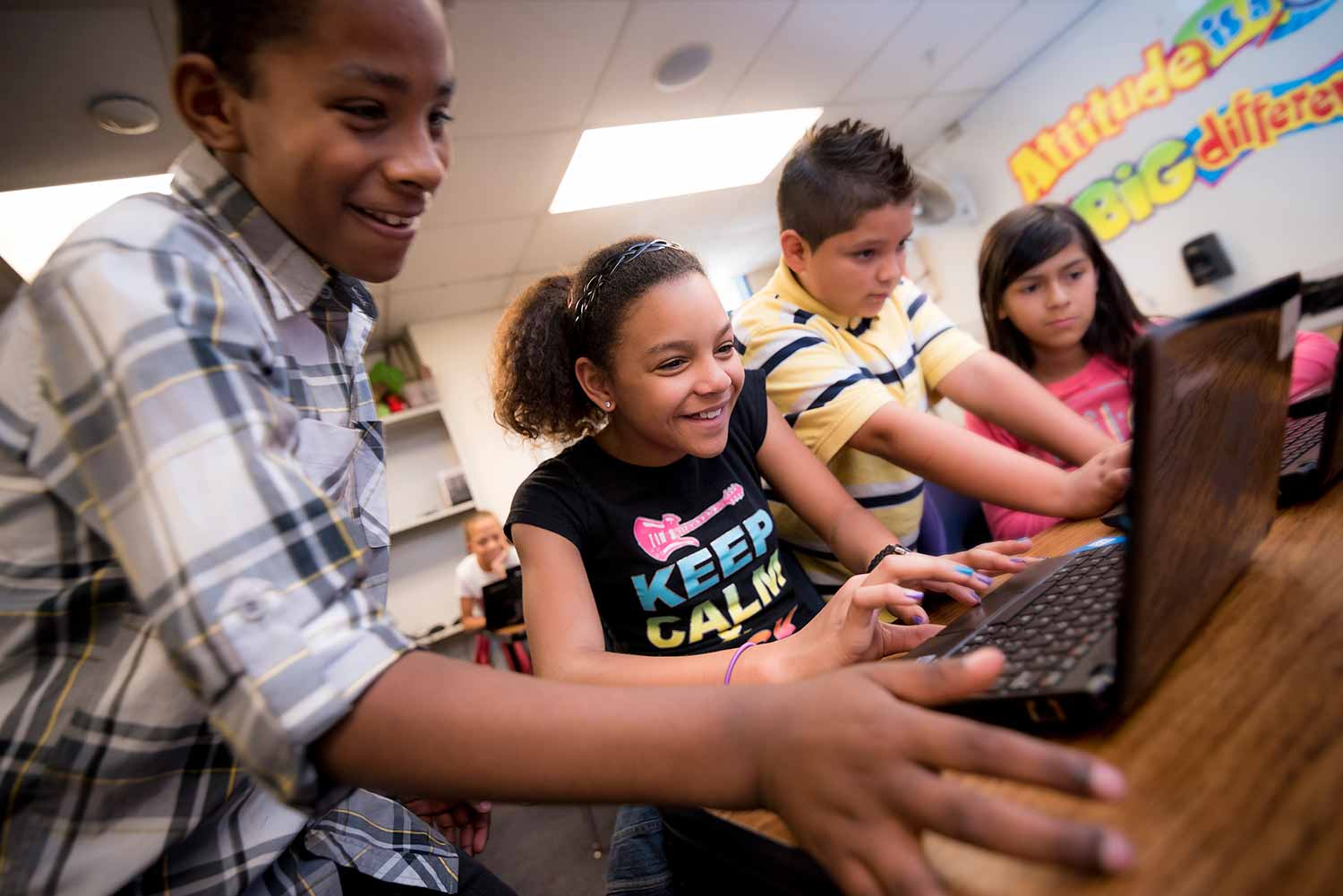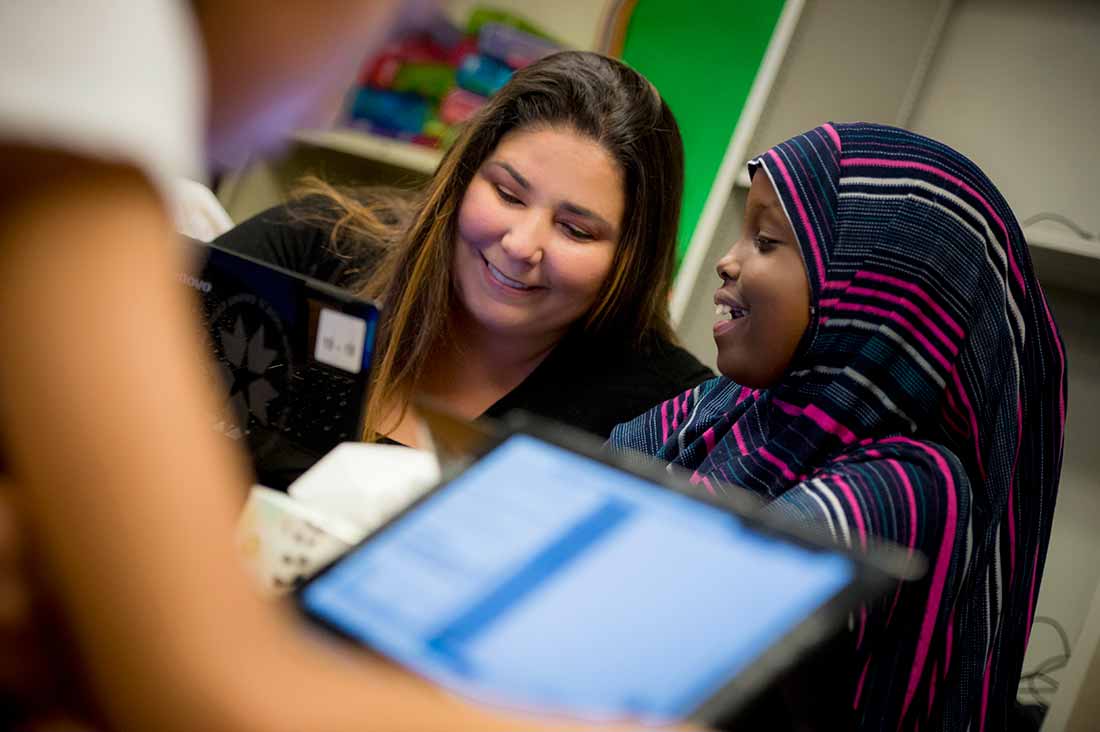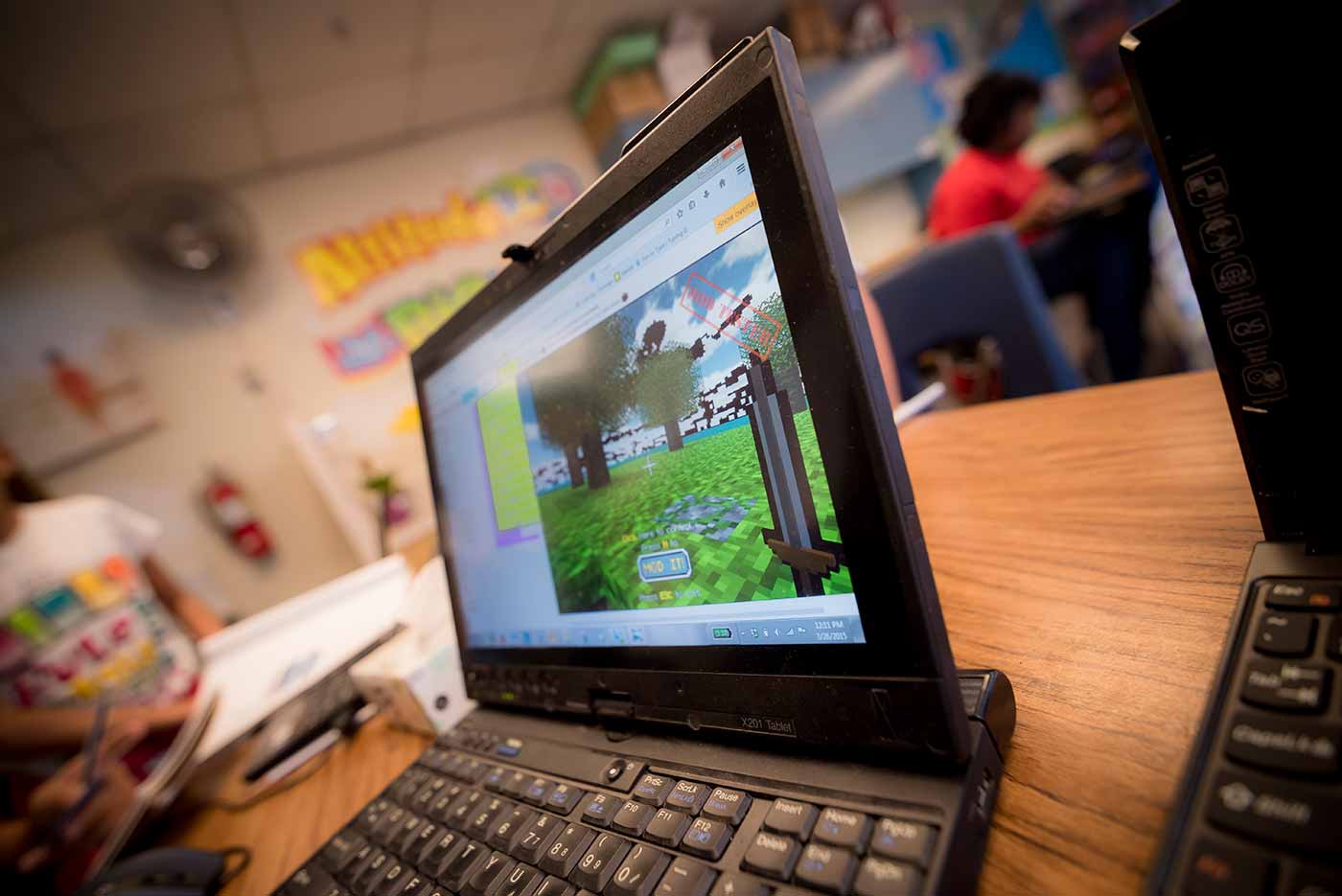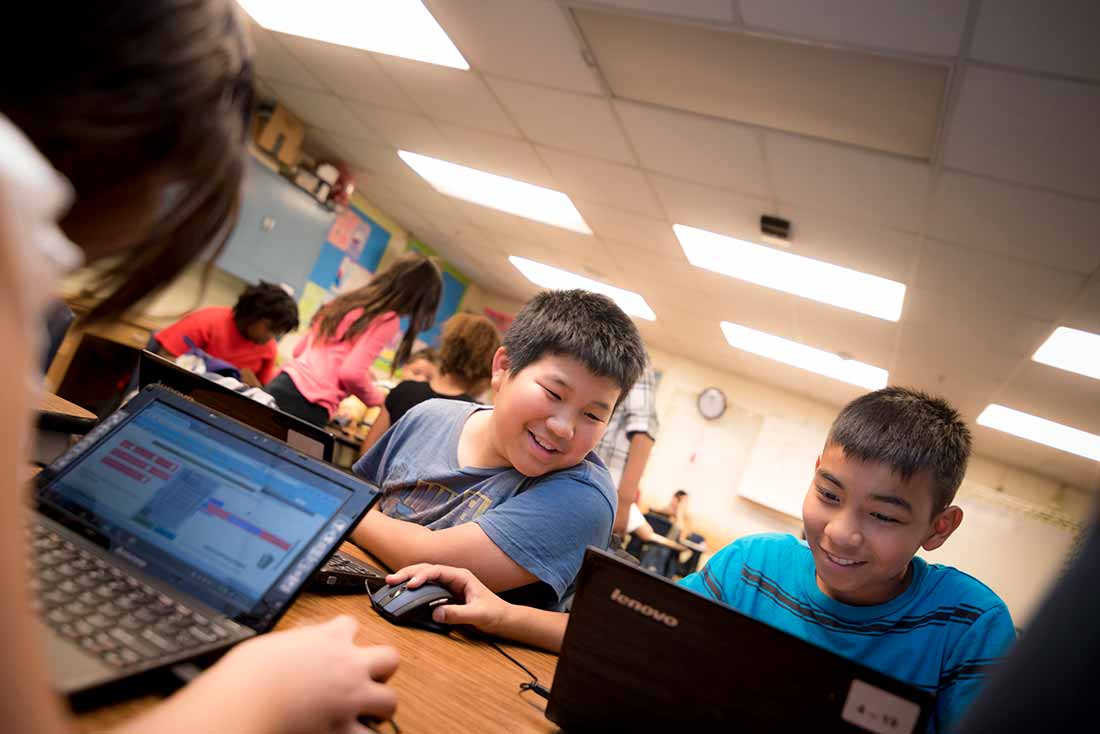
By:
- Ioana Patringenaru
Published Date
By:
- Ioana Patringenaru
Share This:
Lighting a Spark for Computer Programming

Photos by Erik Jepsen/UC San Diego Publications
Young students introduced to coding through free program at their school
They gladly stay up in the evening to do their homework. And they don’t mind working for extra credit on the weekend either. If they have some down time in class, they work some more.
They are second- to fifth-grade students at Adams Elementary School in the City Heights neighborhood of San Diego who are learning how to program while playing a simulated version of Minecraft, a popular computer game. The programming classes are made possible by a partnership between the San Diego Rotary Club, San Diego schools and ThoughtSTEM, a company co-founded by three Ph.D. students at UC San Diego. In addition to Adams, two other elementary schools and two middle schools in City Heights are taking part in the program.
“The idea is to ignite a spark that will allow students to learn more in the STEM fields,” said Bink Cook, the San Diego Rotarian who leads the education committee for the organization.

That spark was certainly on display on a recent afternoon during a technology class for fifth graders at Adams Elementary. Students worked in groups of four. Sometimes they were intensely focused on their own tasks. Often they brainstormed with classmates. Baylie, 10, had moved her netbook next to her classmate Aisha, one of the program’s highest-performing students. The girls were trying to troubleshoot code that would allow Baylie to modify the game.
“It’s the first time I’ve ever programmed,” said Baylie. “It’s fun, but it’s also confusing.” She wasn’t discouraged though. “I think I want to keep studying this,” she said. “I would really not want to stop because it’s fun.”
Aisha, 10, also had never programmed before starting to learn at Adams back in late January. “It challenges you,” she said. “When you complete it, it makes you feel good about yourself.” By that point, she had already earned 200 badges in the program.
Students are using software, called LearnToMod, using an environment that simulates Minecraft. The software is essentially a textbook that covers all introductory programming concepts. Students begin programming in a block-based language, and can move into coding in languages such as Javascript—the essential language of the web. They also learn key computer science concepts, such as loops, functions, Boolean logic, variables and parameters.
Students have to accomplish a range of tasks, such as building a virtual chessboard and getting virtual drones to carry loads, by moving around bits and pieces of code and filling in blanks in the code. Bits of code that aren’t written correctly or are in the wrong place show up in red. When the code is right, it turns green. Students often work together to troubleshoot code.
“The kids have learned collaboration, communication and problem-solving skills through this program,” said Christine Boatman, Adams’ technology teacher.

She works every day with all the school’s second- through fifth-grade students. The big appeal for the children was the ability to work with a Minecraft simulation, she said. But it soon became more than that. “They are no longer playing the game,” she said. “They are creating it.” The whole experience is a great reminder of why she became a teacher, she said. “To watch them concentrate so hard, it’s great to see.”
Adams principal Sylvia McGrade is equally enthusiastic. She likes that the program requires students to work with each other and learn how to communicate what they’re learning. It also gives them access to a skill that will serve them well in college and in the workplace. “They’ll become the coders of the future,” McGrade said.
Daniel Dupont, a parent and long-term substitute at Adams, said introducing programming with Minecraft helps the students feel comfortable while they’re learning. It also gets them fired up. “Anytime you can get kids excited about learning, it’s a victory,” he said.
ThoughtSTEM provided two in-person training sessions for six City Heights teachers and gave access to LearnToMod and its Minecraft simulator to five schools, including Adams. They also provide virtual office hours and instructional videos for teachers. The organization also provided a curriculum, guiding students as they learn increasingly complex programming skills and earn badges. After they earn a certain number of badges, students can also pick playing cards that ask them to create a specific modification, or Mod, in Minecraft, without giving them any instructions.

“The students are getting inspired and really excited,” said ThoughtSTEM co-founder Sarah Guthals, now a UC San Diego postdoctoral researcher in computer science who interfaces with the teachers.
The program is a pilot of sorts, she explained. Next school year, ThoughtSTEM will be launching an online course for teachers. Guthals said she hopes the Rotary will be able to fund the City Heights’ teachers’ participation in that course so they can keep working with their students.
In addition to providing funding for the program, the San Diego Rotary also offers other STEM initiatives, led by a committee of volunteers who support and assist educators. The committee is now asking the club to include funds in next year’s budget to continue these programs. The organization is also working with the CREATE program at UC San Diego to craft assessments to evaluate what the City Heights students have learned. “We want to expand the program,” Cook said. “We also want to show it makes a difference.”
Share This:
You May Also Like
Stay in the Know
Keep up with all the latest from UC San Diego. Subscribe to the newsletter today.


